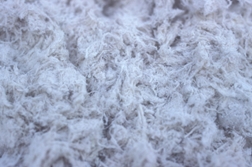 Weirick’s attorney Jay Stuemke told jurors that this case is about a breach of trust by Johnson & Johnson and to a lesser extent by Imerys Talc America that supplied J&J. That trust has been going on for more than a century based on the image of a mother and child. He said that J&J sought to make this connection deliberately, and its literature had described the baby powder as the purest substance, according to Courtroom View Network.
Weirick’s attorney Jay Stuemke told jurors that this case is about a breach of trust by Johnson & Johnson and to a lesser extent by Imerys Talc America that supplied J&J. That trust has been going on for more than a century based on the image of a mother and child. He said that J&J sought to make this connection deliberately, and its literature had described the baby powder as the purest substance, according to Courtroom View Network.Defense attorney Christopher Vejnoska attempted to invoke jurors’ doubt by questioning whether asbestos was the cause of Weirick’s mesothelioma. “It’s unfortunate, but sometimes, cancer just happens,” he said. “And that’s not an excuse. That’s just science.” But exposure to asbestos is the only known cause of mesothelioma, according to the Mesothelioma Group, while webmd.com states that working with asbestos is the main risk factor for mesothelioma. All medical experts agree that inhaling or ingesting asbestos causes these microscopic fibers to get lodged in the lining of the chest or abdomen. The fibers can eventually cause tumors to develop because the body is incapable of expelling them.
A New Jersey jury in April 2018 concluded that J&J and Imerys officials knew for years their talc contained trace amounts of asbestos. The verdict was the first time a jury lined up behind a consumer’s claims that J&J’s baby powder and former Shower-to-Shower product can cause mesothelioma, reported Bloomberg. David Logan, law professor at Roger Williams University in Rhode Island, said that asbestos “was a really bad product and J&J shouldn’t have been within a thousand miles of having it in its baby powder.” Evidence during that trial included a 1969 confidential memo by a J&J research scientist who warned the company to be ready for litigation if the information became public. The case is Lanzo v. Cyprus Amex Minerals Co., L00738516, Middlesex Superior Court (New Brunswick).
Other Johnson & Johnson Mesothelioma Lawsuits in California
Another Los Angeles Superior Court jury this year awarded $25.75 million: $21.75 million in compensatory damages and $4 million in punitive damages. Jurors found Johnson & Johnson negligent and failed to warn consumers that its Baby Powder contained manufacturing and design defects because it contained asbestos. Joanne Anderson, age 66, filed the lawsuit after she was diagnosed with mesothelioma. The San Francisco Business Times reported that experts estimate she used the product more than 10,000 times. Medical testimony indicated that all of her exposures to asbestos contributed to cause her mesothelioma. A second case this year in the same court ended in a mistrial.
What is Talc?
“It’s a mineral…, A rock, you dig it from the ground” attorney Stuemke told the jury during open arguments at Weirick’s trial. He explained that a talc mine in Vermont provided J&J with talc that went into its baby powder for many years. It was turned from rock to powder by Imerys and then packaged and made into baby powder and cosmetics.
READ MORE TALCUM POWDER LEGAL NEWS
J&J’s attorney countered. Vejnoska said that J&J “constantly sampled” its talc products; that the company “went to extraordinary lengths to ensure that its products were not contaminated and to be sure that people could trust those products”, according to Courtroom View Network. He further stated that evidence would show cosmetic talc does not cause mesothelioma and that Johnson & Johnson products are not contaminated. Carolyn Weirick, age 59 and mother of four teenagers, believes otherwise.
